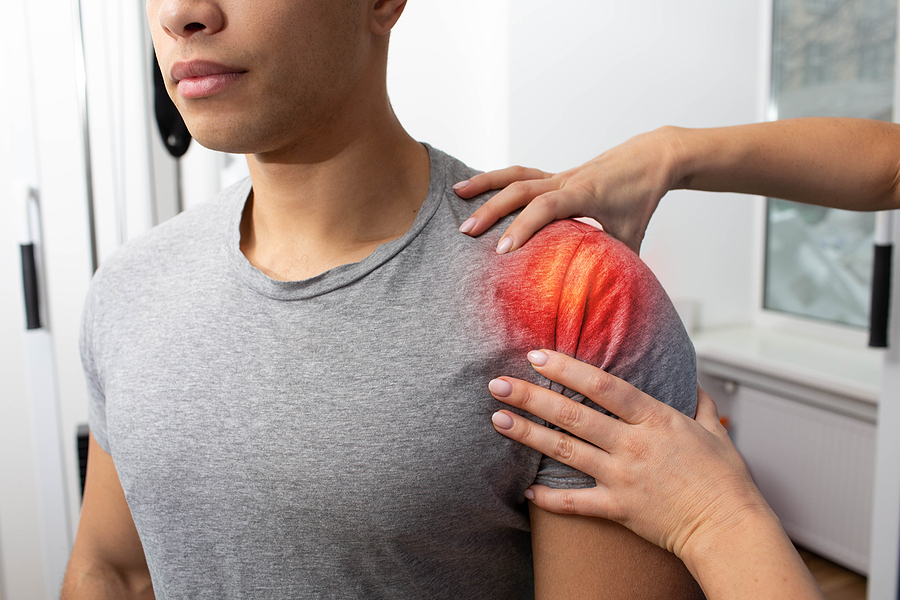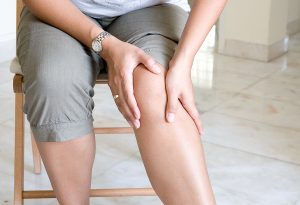Joint pain can seem relentless. It makes you want to avoid moving at all, but that makes the pain worse. The same is true with one of the more common forms of joint pain – frozen shoulder. It’s a condition that causes long-term disability in 10 to 20% of those who have it.
Frozen shoulder affects between 2% to 5% of Americans, with 55 being the average age of onset. It’s slightly more common in women, and it often appears during menopause. The link between frozen shoulder and menopause is unknown, but it’s believed it may be linked to the hormonal changes taking place. Premium Sports and Orthopedics dives into frozen shoulder and what you can do to feel better.
Understanding What Frozen Shoulder Is and How It Feels
Frozen shoulder, also called adhesive capsulitis, is a painful musculoskeletal condition where the shoulder joint’s tissue thickens. This thickening tissue tightens the joint and makes it very stiff and painful. Generally, the condition occurs in three stages.
- Freezing: Pain increases and movement starts to become limited.
- Frozen: Pain often decreases, but the shoulder is stiff and it’s hard to move the arm.
- Thawing – Pain and movement start to improve.
Symptoms may progress slowly and eventually go away within one to three years. The sooner that you seek treatment for frozen shoulder, the shorter the duration in most cases.
How do you know if you have frozen shoulder? You’ll know. It’s hard to ignore the pain and loss of movement in your shoulder. It becomes a challenge to move your arm in the usual manner, which impacts your daily routine. Even something as simple as putting on your shirt or washing your hair seems impossible. Reaching back to fasten a bra or reach a cup on an upper shelf is challenging.
General Joint Pain – Key Areas and Their Causes
Frozen shoulder is just one of the more common areas where joint pain impacts your daily routine. Arthritis is the most common cause of joint pain, and there are well over 100 types of arthritis. The most common is osteoarthritis, which occurs as the wear and tear on a joint degrades the cartilage cushioning the ends of each bone forming a joint.
Arthritis impacts many joints, including the ankles, knees, hips, fingers, and wrists. Eating a healthy diet, maintaining a healthy weight, and exercising regularly are key to limiting the pain from arthritis. Even then, there are types of arthritis, such as rheumatoid arthritis, that are often genetic or environmental, which makes them hard to avoid.
Sports injuries also increase the chances of developing joint pain. Overuse injuries like you experience with tennis or golfer’s elbow or runner’s knee are other reasons for joint pain. Proper positioning and movements, paired with warm-ups and training, are important to preventing these joint issues.
Long-Term Value in the Lifestyle Choices You Make When It Comes to Joint Health
While your lifestyle can’t guarantee you never experience joint pain, it can help lower the odds. Most importantly, avoid processed foods, fried foods, and high-sugar options. They’re more likely to trigger an inflammatory response within your body. Aim for a healthy diet of fruits, vegetables, lean proteins, fiber, and dairy for calcium.
You may love relaxing at night with a few glasses of wine, a couple of mixed drinks, or some beers, but they aren’t good for your body. Alcohol triggers inflammation. It also is a diuretic, which leads to dehydration, which impacts your joint health.
Drink plenty of water each day. Exact guidelines depend on your body weight, activity level, and health, but a general guideline is 2.7 liters per day for women and 3.7 liters for men. The goal is to have pale yellow urine. If it’s dark yellow, you’re not hydrating enough. If you can’t possibly stand another glass of water, aim for fruits and vegetables with a higher water content, like cucumbers, tomatoes, berries, and oranges.
Get enough sleep, too. Your body heals while you sleep. Aim for seven to eight hours each night. This can seem challenging when you work until 5 p.m., have an hour’s commute to get home, and have a lot to do when you get home. Do the best you can. If you usually get up at 5 a.m. to be at work on time, you need to be in bed by 10 p.m. Don’t waste time checking emails or social media for hours. That can wait until the weekend.
Finally, you need to exercise each day. Health.gov recommends 150 minutes of moderate exercise each week. That breaks down to 30 minutes of exercise five days per week. A brisk half-hour walk is a good way to start. Add additional exercise programs to make sure you’re targeting your core muscle groups. Walk a few days a week, weight train or take an aerobics class on other days, and add Yoga or Tai Chi for their meditative benefits.
The Value in Sports and Orthopedic Solutions for Healthy Joints
Sports and orthopedic specialists offer alternatives to surgery. While some joint injuries are too severe to treat without surgery, many others can be healed effectively with non-surgical medical treatments and therapies.
Biologic-Based Therapy
Biologic-based therapy is an FDA-approved treatment option where your blood is drawn and taken to our lab for processing. The plasma-rich platelets drawn from your blood are injected into the injured joint, ligament, muscle, or tendon to help the tissue heal. It’s an effective treatment that studies find is four times more effective at managing pain and inflammation than steroids.
Because the treatment is done in one visit, you don’t need days or weeks off work or school for your recovery. Most appointments take about an hour, and you return for up to two weeks for a total of two or three injections.
Regenerative Therapy
Regenerative therapy is a minimally invasive option where your blood is drawn, processed to harvest valuable cells that maximize healing, and injected into the damaged or inflamed joint. The only pain is going to be from the blood draw and injections of the cells needed to regenerate tissue. You’re not undergoing anesthesia or needing weeks or months to heal after the procedure.
For most patients, the injections for regenerative therapy are administered three times over no more than five days. You don’t have to take off time from work or school.
Premium Sports & Orthopedics offers a full range of services that help you manage the pain after a joint injury or musculoskeletal condition like arthritis or frozen shoulder. Ask us about medically supervised weight loss programs to help you lose weight and strengthen your joints to ease pain and improve mobility and flexibility. Schedule an appointment online or by phone.







